Papers by Dragana Vulović
Гласник Српског археолошког друштва / Glasnik Srpskog arheološkog društva, 2021
Часопис је објављен уз финансијску подршку Министарства културе и информисања Републике Србије.
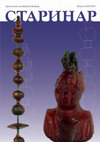
Starinar, 2019
The roman city and military camp of Viminacium is situated between the villages of Stari Kostolac... more The roman city and military camp of Viminacium is situated between the villages of Stari Kostolac and Drmno, 12 kilometres northeast of Požarevac, close to the confluence of the Mlava and the Danube. During its history, it became the biggest urban settlement and the capital of the province of Upper Moesia (Moesia Superior), later First Moesia (Moesia Prima). in one of the necropoles of Viminacium, Pećine, in grave no. 5785, skeletal remains of a juvenile male individual were discovered. The burial took place in Late Antiquity. Anthropological analyses revealed a fracture of the right femur followed by myositis ossificans traumatica. The trauma to the bone can damage the overlying muscle and, occasionally, the muscle tissue will respond to the trauma by producing bone directly in the muscle tissue itself. This condition is known as myositis ossificans traumafica (posttraumatic myositis ossificans or myositis ossificans circumscripta) and is most likely to occur in response to trauma in young male individuals, and in the femoral (the quadriceps muscles) or humeral region (brachium muscles).
The paper presents the case of the pregnant woman discovered at the medieval necropolis of "Preko... more The paper presents the case of the pregnant woman discovered at the medieval necropolis of "Preko Slatine" in Omoljica, a village near Pan~evo. The necropolis is dated to the period of the 12 th -13 th century AD. It deals with a woman aged 25-30 (probably around 28 years old) in the advanced stages of pregnancy, discovered in grave No. 13. This paper presents the possible conditions that led to the death of this woman, but also the problems faced by anthropologists when they attempt to resolve individual cases like this. In paleodemographic research, the mortality rate of pregnant woman is an important element of a population's progress. Pregnant woman mortality is considered an adequate criterion for the social and sanitation conditions of a community and a sensitive indicator of health care and, sometimes, the skill level possessed by midwives or doctors.
This paper presents diseases which directly leave traces on osteological material (enamel hypopla... more This paper presents diseases which directly leave traces on osteological material (enamel hypoplasia, caries, traumatic conditions, haematological disorders, metabolic diseases and middle ear inflammation) and diseases that leave no visible marks on bones, and may indeed be the direct cause of death of children in ancient Sirmium. In paleodemographic research, child mortality rate is an important element of a population's progress. Child mortality is considered an adequate criterion for the social and sanitation conditions of a community and a sensitive indicator of inadequate nutrition.

Гласник Српског археолошког друштва / Journal of Serbian Archaeological Society, 30, Београд/Belgrade 2014, 83–108.
In 2012 during protective-systematic archeological investigations were discovered 75 grave units ... more In 2012 during protective-systematic archeological investigations were discovered 75 grave units in the “Benetton Serbia” factory complex in Jagodin Mala, Niš, Serbia. Burials belonged to the part of the eastern city’s necropolis of Naissus that lasted for three centuries from IV to the end of VI / beginning of VII century. Various grave forms were recorded during excavations (simple pits, graves of bricks and tegulae, masonry tomb constructions for individual or group funerals). The largest number of burial structures had been devastated before the moment of discovery. However, among the graves that were left unlooted, a grave of the deceased buried in a simple pit (grave 66) in the southern part of the investigated area stands out for the richness of the grave inventory.
A female aged 20–24 was buried in a shallow burial pit. She was interred in a barrel-vaulted tomb. In contrast to the modest grave form, its inventory deserves full attention because of its richness. The inventory consists of the deceased’s personal jewelry, made of precious metals and glass as well as glass balsamarium placed to the right of the head. The set of jewelry consisted of silver pin, a pair of gold earrings, a glass bead necklace, two silver bracelets – one on each hand, gold and silver finger-rings on the fingers of the left hand. The sliver pin with a polyhedral head was used for fastening the fabric which covered women’s heads at the necropolis of Jagodin Mala, as was noted in the two other cases at the nearby grave units.
A pair of gold earrings belongs to the type with open tapered ends and a smaller hoop with a pendant, ending in a double coil. There were three golden circular hoops with six granules on the pendant, among which there was a glass bead of hexagonal section. This type of earrings was quite common among the grave inventory in Jagodin Mala, and the late Roman Pannonia (Sirmium) or Dardania (Vindenae, Ulpiana). They were manufactured locally and were par-ticularly popular in IV century. A necklace made of 18 gold bowl-shaped beads and 100 green glass beads of hexagonal section, identical to those on the glass earring's pendant, with a gold tin fastening mechanism is a product of the local, provincial manufacture that was popular and produced for a bigger market at the end of III and during IV century.
Massive silver bracelets with open and slightly tapered ends belong to lo¬cal specimens of luxurious jewelry, which, judging by numerous analogies, were usually made of bronze and far more rarely of silver. An undecorated closed-ended silver finger-ring made of thin foil is chronologically insensitive. On the other hand, a golden finger-ring with a circular hoop and a large pair of granules opposite each other, a circular bezel with a motif of astragalus and a box-setting for a semispherical inlay for a cyan-blue glass is a ring of standard form, popular during IV century.
Such rich collection of personal jewelry made of precious metals could indicate a certain status – affiliation to higher circles of society that the deceased could have had in life, but it may reflect the desire of relatives or persons that bur¬ied her to display the desired status, rather than the real one, by using luxurious items. Based on analogies of jewelry from the already dated units from Jagodin Mala and other sites, the most exact time of this young woman’s burial would be around the middle and the second half of the fourth century, when the Naissus experienced its economic growth, visible in many spheres of social life and when, the state, municipal and private manufacture thrived.
In 2014, at the Belgrade Fortress, the bones of a female individual, aged 3-4 years were discover... more In 2014, at the Belgrade Fortress, the bones of a female individual, aged 3-4 years were discovered in Grave no. 1, in sondage 2/2014. Dental and paleopathological analysis revealed traces of enamel hypoplasia on the teeth, while the bones of the cranial and postcranial skeleton showed traces of scurvy and tuberculosis.

Зборник Народног музеја (Ниш) / Papers of the National Museum of Niš 23, 2014, 35–64., 2014
During the archaeological researches in 2012, in the area of “Benetton” Factory, which represents... more During the archaeological researches in 2012, in the area of “Benetton” Factory, which represents the eastern and southeastern part of a large late-antiquity necropolis in Niš-Naissus (Jagodin Mala city quarter), 75 tombs have been recorded. Amongst the graves, particular attention of the researchers was drawn by a grave with a field label G-6. Up to the socle level it was dug into the subsoil layer. It was built in a shape of sarcophagus, of bricks (41 x 28 x 4 cm and 40 x 27 x 3,5 cm) and mortar while on the outer side it had pebble plating. The grave measures are 2,74 x 1,30 m (external), 1,90 x 0, 60 m (internal) and is 0,71 m high. The grave covering was made of the large format bricks, probably 56 x 56 x 6 cm, arranged in a shape of a double-pitch roof, with vertically placed brick on the eastern gable, additionally fixed by a large stone, connected with mortar to the socle. In the western part the grave was damaged; however, on the basis of the neighboring graves shape, we assume that it was built of brick, stone and mortar in the form of an arched pediment.
The brick built grave number 6 was originally designed for burial of one individual person. However, due to certain historical, familial, economic or other circumstances, there was later buried more than one person in the grave, so that the grave, in terminological and functional terms, actually represents a family/collective tomb.
The smallest number of individual persons buried in that grave, according to results of anthropological analysis, was five:
- two males (individual no.1, 45-55 years old and individual no. 2, 25-30 years old),
- two females (individual no. 3, a girl 6-7 years old and individual no. 4, about 20 years old)
- one person of unknown gender (individual no. 5, 20-24 years old).
For now, the only reliable data is that remains of individual no.1 represent the oldest funeral. With caution, we could assume that having laid the individual no. 1 (a male 45-55 years old), along the southern and northern edge of the grave two individuals were laid (no. 2, a male, 25-30 years old and no. 3, a girl, 6-7 years old), and then individual no. 4 (a female, about 20 years old), over the primary buried person, because of which bones of the man (no. 2) and the girl (no. 3) were probably slightly moved aside. It is unknown relative relation of the individual’s no. 5 funeral, a person of unknown gender, 20-24 years old, of whom only a few bones of the right leg and two teeth have been recorded. Such level of preservation of the bones could have been influenced by a number of factors: soil acidity, fragility and very nature of the bone material as well as high rate of burials in one place.
Movable finds from the tomb are relatively modest. There were found remains of a gold embroidery fabric, three silver needles, frame of the lead mirror, four bronze rings and several glass vessels, in a very fragmented state. Next to the main individual no. 2, on the left, a fragment of a bottom of a glass vessel was found (cat. 9) and fragments of a glass balsamarium (cat. 10). The biggest number of objects is associated with the girl, buried with two or three silver pins (cat. 2-4), four bronze rings (cat. 5-8), the lead mirror from which the preserved frame remained (cat. 1) and a glass vessel (cat. 11).
Frame of the lead mirror, made of one-piece mold, could have been manufactured in some local workshop (officina plumbaria). Placing mirror in the tomb in the funeral practice, through reflection of the glass, could have represented a link between the worlds of the living and the dead, as well as desire to preserve symbolically the figure of the deceased through that reflection. Finds of silver pins represent indirect confirmation that the youngest deceased female head a veil over her head, or that she was wrapped in a shroud. She was buried with personal jewelry consisting of four bronze rings of the same type (circular link and rounded head with a relief representation), which represent typical products of the local fourth century workshops, available to wider range of social classes.
According to finding of the bronze coins from 355-361 that probably belonged to some of the younger funerals, we comes to data that funerals had been conducted in that grave before and around IV century, in the time of greatest prosperity of Naissus, encountered in the time of Constantine I and his successors.
Апстракт: У тексту је приказан појам, патогенеза и етиологија Шморловог дефекта. Дефект је добио ... more Апстракт: У тексту је приказан појам, патогенеза и етиологија Шморловог дефекта. Дефект је добио име према немачком лекару Кристиjану Г. Шморлу (Christian G. Schmorl), који га је описао и епидемиолошки истраживао. Такође, у тексту је дат приказ бележења самог дефекта приликом анализе хуманог остеолошког материјала, као и значај налаза пршљенова са Шморловим дефектом у археолошком контексту. Многи аутори сматрају да је прави узрок настанка ових дефеката још увек непознат. Поједини научници мисле да етиологија може бити идиопатска. Неки као главни разлог настанка Шморловог дефекта наводе трауму, а други га доводе у везу са многим болестима и различитим патолошким стањима. Нажалост, непосредан узрок настанка хернијације интервертебралног диска на кичменим пршљеновима из археолошког контекста често остаје неутврђен.
Book chapters by Dragana Vulović
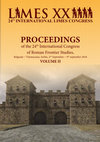
LIMES XXIIII Proceedings of the 24th International Congress of Roman Frontier Studies 2nd − 9th September 2018 Viminacium − Belgrade, Serbia, 2023
This text is a result of the projects Viminacium, Roman city and military legion camp-research of... more This text is a result of the projects Viminacium, Roman city and military legion camp-research of the material and non material culture of inhabitants by using the modern technologies of remote detection, geophysics, GIS, digitalisation and 3D visualisation (No 47018), Romanization, urbanization and transformation of urban centres of civil, military and residential character in Roman provinces on the territory of Serbia (No. 177007) and Urbanization and development processes in the medieval society (No. 177021), funded by the Ministry of Education, Science and Technological Development of the Republic of Serbia. We express our gratitude to Mr M. Radmilović for the map of the site (Map 1.) and for post-production of all illustrations (Plates I-IV). Viminacium (Stari Kostolac) was the largest and the most important city in Moesia Superior (Upper Moesia). It was the provincial capital, administrative, religious, military and trade centre. It was built on a strategic location at the confluence of the river Mlava and the Danube, on the crossroad of both land and river routes with large military and trade potential. In one of the necropoles of Viminacium, Pirivoj, in grave no. 325, skeletal remains of a juvenile female individual were discovered. The burial is dated into the first half of the 3 rd century. The deceased juvenile was laid on the back with hands clasped on her stomach. The orientation of the grave was North-South. Anthropological analyses revealed traces of osteomyelitis or cancer with proliferative periostitis on the left tibia and left fibula. The source of infection was related to a large ulcer on the left tibia. The current appearance of the bone shows poor health treatment of the ulcer and active inflammation at the time of death. In this text, we will also focus on the ulcer aetiology and possibility of its' treatment in Antiquity. Treatments will also be briefly discussed, with preparations based on silver and lead, vinegar, honey, etc. 1
2021, Arheologija u Srbiji. Projekti Arheološkog instituta u 2020. godini. eds. S. Vitezović, M. Radišić, Đ. Obradović, 2023
Bioarchaeology in the Balkans. Studies in anthropology and zooarchaeology / Bioarheologija na Balkanu. Studije iz antropologije i zooarheologije, 2023
Ova knjiga je štampana sredstvima Ministarstva nauke, tehnološkog razvoja i inovacija Republike S... more Ova knjiga je štampana sredstvima Ministarstva nauke, tehnološkog razvoja i inovacija Republike Srbije.
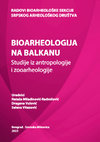
Bioarchaeology in the Balkans. Studies in anthropology and zooarchaeology/ Bioarheologija na Balkanu. Studije iz antropologije i zooarheologije, 2023
Ankiloza sakruma i ilijačne kosti, odnosno fuzija sakroilijačnog zgloba, može nastati kao posledi... more Ankiloza sakruma i ilijačne kosti, odnosno fuzija sakroilijačnog zgloba, može nastati kao posledica difuzne idiopatske skeletne hiperostoze (DISH), ankilozirajućeg spondilitisa (AS), entezopatije, infektivnih oboljenja (npr. tuberkuloze), ili kao posledica bilo jedne ili više ponavljajućih trauma zgloba. Istraživanja su pokazala da se češće javlja kod starijih, uglavnom muških osoba, i da potencijalni uzročnici mogu biti i hormonskog ili mehaničkog karaktera. S obzirom na to da je reč o oboljenju koje se retko javlja, i da se u stručnoj antropološkoj literaturi ređe spominje, predstavićemo etiologiju, učestalost i polnu distribuciju ovog oboljenja, način njegovog ispoljavanja (unilateralno i bilateralno), a posebnu pažnju ćemo usmeriti na mogućnost utvrđivanja polne pripadnosti skeleta na osnovu oblika samog mesta fuzije, odnosno tzv. sakroilijačni zglobni bridžing (sacroiliac joint bridging, SIB), koji su ustanovili Dar i Herškovic. U radu ćemo prikazati i slučajeve koji su otkriveni kod sedam individua iz antičkog i srednjovekovnog perioda u Srbiji.
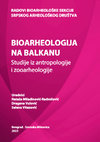
Bioarchaeology in the Balkans. Studies in anthropology and zooarchaeology / Bioarheologija na Balkanu. Studije iz antropologije i zooarheologije, 2023
Nakon tri zbornika radova koje je priredila Bioarheološka sekcija Srpskog arheološkog društva, pr... more Nakon tri zbornika radova koje je priredila Bioarheološka sekcija Srpskog arheološkog društva, pripremljen je i četvrti, koji obuhvata radove na teme iz antropologije i zooarheologije, odnosno, preciznije, na temu artefakata od koštanih sirovina. Rad D. Vulović, N. Miladinović-Radmilović i S. Petković analizira dentalno zdravlje u antičkom periodu kod stanovništva sahranjenog na lokalitetu Begov Most-Staničenje. Srednjovekovnom populacijom bavi se tekst V. Mikašinović, K. Đukić i K. Penezić, koji analizira porotične hiperostoze i cribra orbitalia na skeletnom materijalu sa srednjovekovne nekropole Vinča-Belo Brdo. Rad N. Miladinović-Radmilović, D. Vulović i N. Dimovski bavi se polnim dimorfizmom ankiloze sakroilijačnog zgloba, dok su K. Đukić, T. Šarkić i Đ. Bracanović analizirale bioantropološke tragove bliske borbe, na osnovu materijala koji je otkriven na teritoriji Beograda, na Kosančićevom vencu. S. Stefanović donosi rad koji se bavi arheologijom imuniteta na širem, dijahronijskom planu. Oba rada na zooarheološke teme donose analize koštanih artefakata. N. Marković i P. Špehar analizirali su nalaze srednjovekovnih klizaljki sa lokaliteta Crkveno Brdo. Rad G. Jeremić, S. Lazić i S. Vitezović bavi se jednim neuobičajenim nalazom iz antičkog Naisa, koji je, na osnovu tragova upotrebe, interpretiran kao spatula-lenjir, korišćen za popravke voštanih tablica. Bioarheologija na Balkanu. Studije iz antropologije i zooarheologije.
Gamzigrad-Studien I, Ergebnisse der deutsch-serbischen Forschungen im Umfeld des Palastes Romuliana; eds. Gerda von Bülow / Sofija Petković, 2020
Arheologija u Srbiji. Projekti Arheološkog instituta u 2019. godini. eds. S. Vitezović, M. Radišić, Đ. Obradović, 2021

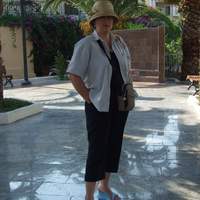
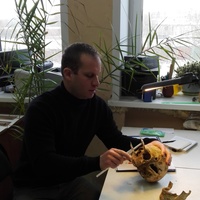
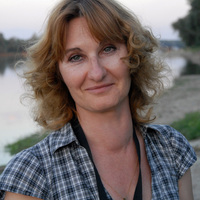

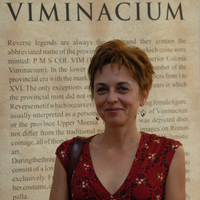

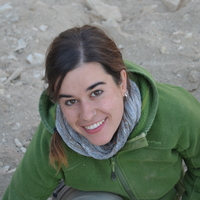

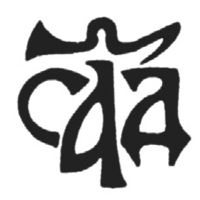

Uploads
Papers by Dragana Vulović
A female aged 20–24 was buried in a shallow burial pit. She was interred in a barrel-vaulted tomb. In contrast to the modest grave form, its inventory deserves full attention because of its richness. The inventory consists of the deceased’s personal jewelry, made of precious metals and glass as well as glass balsamarium placed to the right of the head. The set of jewelry consisted of silver pin, a pair of gold earrings, a glass bead necklace, two silver bracelets – one on each hand, gold and silver finger-rings on the fingers of the left hand. The sliver pin with a polyhedral head was used for fastening the fabric which covered women’s heads at the necropolis of Jagodin Mala, as was noted in the two other cases at the nearby grave units.
A pair of gold earrings belongs to the type with open tapered ends and a smaller hoop with a pendant, ending in a double coil. There were three golden circular hoops with six granules on the pendant, among which there was a glass bead of hexagonal section. This type of earrings was quite common among the grave inventory in Jagodin Mala, and the late Roman Pannonia (Sirmium) or Dardania (Vindenae, Ulpiana). They were manufactured locally and were par-ticularly popular in IV century. A necklace made of 18 gold bowl-shaped beads and 100 green glass beads of hexagonal section, identical to those on the glass earring's pendant, with a gold tin fastening mechanism is a product of the local, provincial manufacture that was popular and produced for a bigger market at the end of III and during IV century.
Massive silver bracelets with open and slightly tapered ends belong to lo¬cal specimens of luxurious jewelry, which, judging by numerous analogies, were usually made of bronze and far more rarely of silver. An undecorated closed-ended silver finger-ring made of thin foil is chronologically insensitive. On the other hand, a golden finger-ring with a circular hoop and a large pair of granules opposite each other, a circular bezel with a motif of astragalus and a box-setting for a semispherical inlay for a cyan-blue glass is a ring of standard form, popular during IV century.
Such rich collection of personal jewelry made of precious metals could indicate a certain status – affiliation to higher circles of society that the deceased could have had in life, but it may reflect the desire of relatives or persons that bur¬ied her to display the desired status, rather than the real one, by using luxurious items. Based on analogies of jewelry from the already dated units from Jagodin Mala and other sites, the most exact time of this young woman’s burial would be around the middle and the second half of the fourth century, when the Naissus experienced its economic growth, visible in many spheres of social life and when, the state, municipal and private manufacture thrived.
The brick built grave number 6 was originally designed for burial of one individual person. However, due to certain historical, familial, economic or other circumstances, there was later buried more than one person in the grave, so that the grave, in terminological and functional terms, actually represents a family/collective tomb.
The smallest number of individual persons buried in that grave, according to results of anthropological analysis, was five:
- two males (individual no.1, 45-55 years old and individual no. 2, 25-30 years old),
- two females (individual no. 3, a girl 6-7 years old and individual no. 4, about 20 years old)
- one person of unknown gender (individual no. 5, 20-24 years old).
For now, the only reliable data is that remains of individual no.1 represent the oldest funeral. With caution, we could assume that having laid the individual no. 1 (a male 45-55 years old), along the southern and northern edge of the grave two individuals were laid (no. 2, a male, 25-30 years old and no. 3, a girl, 6-7 years old), and then individual no. 4 (a female, about 20 years old), over the primary buried person, because of which bones of the man (no. 2) and the girl (no. 3) were probably slightly moved aside. It is unknown relative relation of the individual’s no. 5 funeral, a person of unknown gender, 20-24 years old, of whom only a few bones of the right leg and two teeth have been recorded. Such level of preservation of the bones could have been influenced by a number of factors: soil acidity, fragility and very nature of the bone material as well as high rate of burials in one place.
Movable finds from the tomb are relatively modest. There were found remains of a gold embroidery fabric, three silver needles, frame of the lead mirror, four bronze rings and several glass vessels, in a very fragmented state. Next to the main individual no. 2, on the left, a fragment of a bottom of a glass vessel was found (cat. 9) and fragments of a glass balsamarium (cat. 10). The biggest number of objects is associated with the girl, buried with two or three silver pins (cat. 2-4), four bronze rings (cat. 5-8), the lead mirror from which the preserved frame remained (cat. 1) and a glass vessel (cat. 11).
Frame of the lead mirror, made of one-piece mold, could have been manufactured in some local workshop (officina plumbaria). Placing mirror in the tomb in the funeral practice, through reflection of the glass, could have represented a link between the worlds of the living and the dead, as well as desire to preserve symbolically the figure of the deceased through that reflection. Finds of silver pins represent indirect confirmation that the youngest deceased female head a veil over her head, or that she was wrapped in a shroud. She was buried with personal jewelry consisting of four bronze rings of the same type (circular link and rounded head with a relief representation), which represent typical products of the local fourth century workshops, available to wider range of social classes.
According to finding of the bronze coins from 355-361 that probably belonged to some of the younger funerals, we comes to data that funerals had been conducted in that grave before and around IV century, in the time of greatest prosperity of Naissus, encountered in the time of Constantine I and his successors.
Book chapters by Dragana Vulović
A female aged 20–24 was buried in a shallow burial pit. She was interred in a barrel-vaulted tomb. In contrast to the modest grave form, its inventory deserves full attention because of its richness. The inventory consists of the deceased’s personal jewelry, made of precious metals and glass as well as glass balsamarium placed to the right of the head. The set of jewelry consisted of silver pin, a pair of gold earrings, a glass bead necklace, two silver bracelets – one on each hand, gold and silver finger-rings on the fingers of the left hand. The sliver pin with a polyhedral head was used for fastening the fabric which covered women’s heads at the necropolis of Jagodin Mala, as was noted in the two other cases at the nearby grave units.
A pair of gold earrings belongs to the type with open tapered ends and a smaller hoop with a pendant, ending in a double coil. There were three golden circular hoops with six granules on the pendant, among which there was a glass bead of hexagonal section. This type of earrings was quite common among the grave inventory in Jagodin Mala, and the late Roman Pannonia (Sirmium) or Dardania (Vindenae, Ulpiana). They were manufactured locally and were par-ticularly popular in IV century. A necklace made of 18 gold bowl-shaped beads and 100 green glass beads of hexagonal section, identical to those on the glass earring's pendant, with a gold tin fastening mechanism is a product of the local, provincial manufacture that was popular and produced for a bigger market at the end of III and during IV century.
Massive silver bracelets with open and slightly tapered ends belong to lo¬cal specimens of luxurious jewelry, which, judging by numerous analogies, were usually made of bronze and far more rarely of silver. An undecorated closed-ended silver finger-ring made of thin foil is chronologically insensitive. On the other hand, a golden finger-ring with a circular hoop and a large pair of granules opposite each other, a circular bezel with a motif of astragalus and a box-setting for a semispherical inlay for a cyan-blue glass is a ring of standard form, popular during IV century.
Such rich collection of personal jewelry made of precious metals could indicate a certain status – affiliation to higher circles of society that the deceased could have had in life, but it may reflect the desire of relatives or persons that bur¬ied her to display the desired status, rather than the real one, by using luxurious items. Based on analogies of jewelry from the already dated units from Jagodin Mala and other sites, the most exact time of this young woman’s burial would be around the middle and the second half of the fourth century, when the Naissus experienced its economic growth, visible in many spheres of social life and when, the state, municipal and private manufacture thrived.
The brick built grave number 6 was originally designed for burial of one individual person. However, due to certain historical, familial, economic or other circumstances, there was later buried more than one person in the grave, so that the grave, in terminological and functional terms, actually represents a family/collective tomb.
The smallest number of individual persons buried in that grave, according to results of anthropological analysis, was five:
- two males (individual no.1, 45-55 years old and individual no. 2, 25-30 years old),
- two females (individual no. 3, a girl 6-7 years old and individual no. 4, about 20 years old)
- one person of unknown gender (individual no. 5, 20-24 years old).
For now, the only reliable data is that remains of individual no.1 represent the oldest funeral. With caution, we could assume that having laid the individual no. 1 (a male 45-55 years old), along the southern and northern edge of the grave two individuals were laid (no. 2, a male, 25-30 years old and no. 3, a girl, 6-7 years old), and then individual no. 4 (a female, about 20 years old), over the primary buried person, because of which bones of the man (no. 2) and the girl (no. 3) were probably slightly moved aside. It is unknown relative relation of the individual’s no. 5 funeral, a person of unknown gender, 20-24 years old, of whom only a few bones of the right leg and two teeth have been recorded. Such level of preservation of the bones could have been influenced by a number of factors: soil acidity, fragility and very nature of the bone material as well as high rate of burials in one place.
Movable finds from the tomb are relatively modest. There were found remains of a gold embroidery fabric, three silver needles, frame of the lead mirror, four bronze rings and several glass vessels, in a very fragmented state. Next to the main individual no. 2, on the left, a fragment of a bottom of a glass vessel was found (cat. 9) and fragments of a glass balsamarium (cat. 10). The biggest number of objects is associated with the girl, buried with two or three silver pins (cat. 2-4), four bronze rings (cat. 5-8), the lead mirror from which the preserved frame remained (cat. 1) and a glass vessel (cat. 11).
Frame of the lead mirror, made of one-piece mold, could have been manufactured in some local workshop (officina plumbaria). Placing mirror in the tomb in the funeral practice, through reflection of the glass, could have represented a link between the worlds of the living and the dead, as well as desire to preserve symbolically the figure of the deceased through that reflection. Finds of silver pins represent indirect confirmation that the youngest deceased female head a veil over her head, or that she was wrapped in a shroud. She was buried with personal jewelry consisting of four bronze rings of the same type (circular link and rounded head with a relief representation), which represent typical products of the local fourth century workshops, available to wider range of social classes.
According to finding of the bronze coins from 355-361 that probably belonged to some of the younger funerals, we comes to data that funerals had been conducted in that grave before and around IV century, in the time of greatest prosperity of Naissus, encountered in the time of Constantine I and his successors.
This session seeks to enable and encourage a multiscale exploration of the civilian and military populations inhabiting these territories during these transformative times. We eagerly invite contributions from archaeology, anthropology, archaeogenetics, and isotope sciences to foster a multidisciplinary dialogue, synergizing archaeological and scientific perspectives.
In a synoptic approach, mortuary archaeology illuminates societal norms, beliefs, and the nuanced rituals surrounding death. Complementing this, anthropological data sketches a detailed portrayal of health status, diet, and daily challenges faced by these populations. Isotope analyses offer further granularity on dietary habits, mobility, and interaction with the landscape. Meanwhile, ancient DNA deciphers intricate tales of migrations, interactions, and ancestral lineages, often providing insights elusive to other methodologies.
Embracing these multifaceted strands of evidence, this session aims to delve into the life and death of the Danube provinces' inhabitants. Concurrently, it hopes to spotlight evolving methodologies and theoretical approaches in bioarchaeology. We welcome submissions spanning from meticulous case studies to overarching discussions on bioarchaeological practices within Roman archaeology